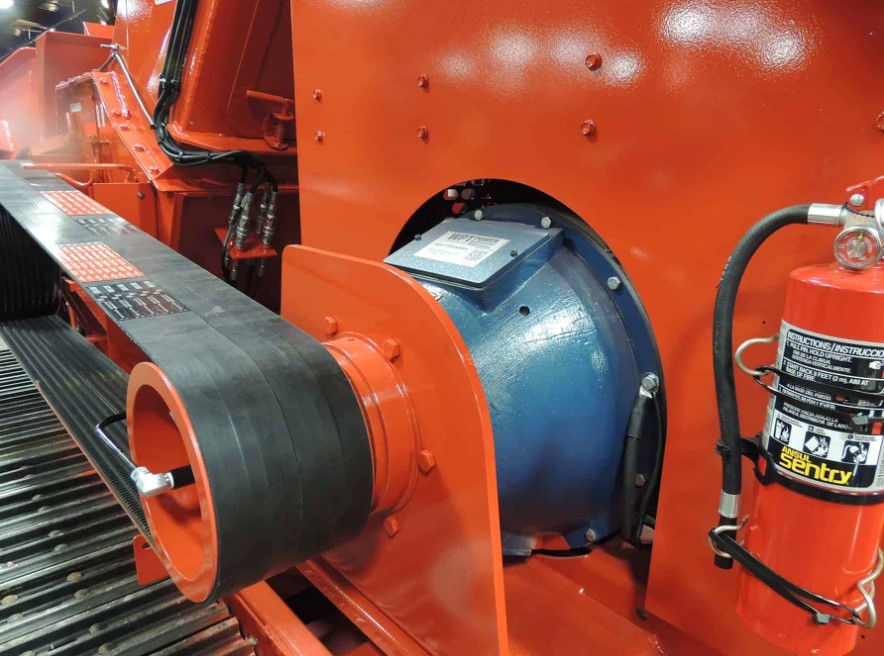
Mobile hydraulic systems are used today to power up different machines for the agricultural and construction industries.
These small and lightweight systems allow them to fit in the tightest spaces while providing high-output power. Hydraulic PTO has various components, such as pumps, motors, cylinders, pistons, hoses, and control valves.
Power Take-Offs
What Are Hydraulic PTO and its Applications?
Power take-offs, often referred to as PTOs, are mechanical gearboxes that attach to apertures provided on truck transmissions. They transfer the engine’s mechanical energy to auxiliary components such as hydraulic pumps.
Many field service businesses use PTOs to power tools on their trucks, such as air compressors, tree spades, or hydraulic lifts. That’s why it’s essential to understand what power take-offs are and how they can benefit your company.
WPT Power Corporation manufactures a robust line of work truck power take-offs and hydraulic components for various industries. Hews Company is a WPT-authorized master warehouse and can help you specify the correct PTO for your application.
Hydraulic Pumps
Power take-offs (PTOs) provide hydraulic power to various accessories connected to work trucks. These include a wide range of mowers, wood chippers, and water pumps.
PTOs are connected to the vehicle’s engine flywheel and crankshaft, passing engine power to the driveline that connects to the accessory. Depending on the accessory, a universal joint may also be required to complete the connection.
A PTO’s horsepower is directly related to the rpm of the output shaft. So, for example, if a pump requires 1,500 rpm and the vehicle’s engine runs at 1,000 rpm, then the PTO must be rated at 150 percent of engine speed to meet the power requirements.
A load-sensing gear pump, Figure 19, minimizes power consumption and heat by relating hydraulic horsepower to the maximum load pressure. Load-sensing pumps typically increase their discharge pressure by 200 to 250 psi higher than the actual load pressure, resulting in more efficient operation.
Hydraulic Cylinders
Hydraulic cylinders are devices that convert the engine’s power into hydraulic force. This pressure drives various parts and accessories, such as pumps, valves, and hoses.
The cylinder is made of a metal barrel with a piston connected to a rod that moves back and forth. It has sliding rings and seals.
These seals are essential in preventing leakage and damage to the hydraulic fluid, which can cause a system failure. They are typically designed to withstand extreme pressures and temperatures without failing.
When selecting a hydraulic cylinder for your application, the first thing to consider is its stroke length. This determines how much support the piston and cylinder will need to withstand the weight of the load they will handle.
Cylinders come in many different sizes, each with a specific capacity. In addition, they can be designed with position sensors, allowing the operator to program the cylinder’s movement in response to feedback from the machine. This is especially useful in autonomous vehicles, subsea environments, and with heavy mobile equipment.
Hydraulic Hoses
Hydraulic hoses transfer hydraulic fluid within a system to transmit force or energy to the point of application. They provide wide pressure ranges, optimal levels of abrasion resistance, and long-lasting durability.
The general construction of a hydraulic hose involves an inner tube, reinforcement, and cover. The inner box is made of thermoplastic, synthetic rubber, or polytetrafluoroethylene to resist corrosion and chemical impact.
Reinforcement: This textile, plastic, or metal body or carcass reinforces the hose to withstand internal and external pressures. Types of support include wire braid and wire spiral.
Temperature Ratings
Hydraulic hoses are rated for performance in terms of both liquid and environmental temperatures. However, excessive temperatures can significantly reduce working life or cause failure, so choosing an adequately rated hose for both is essential.
Pressure ratings or recommendations for a particular type of hose are typically available from the manufacturer.
When selecting a hose, it is essential to consider the application and material requirements. In addition, hoses should be routed parallel to machine contours whenever possible to protect lines from damage and minimize flow-restricting bends.
